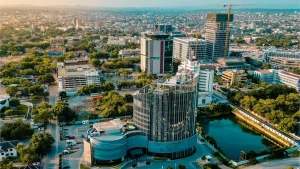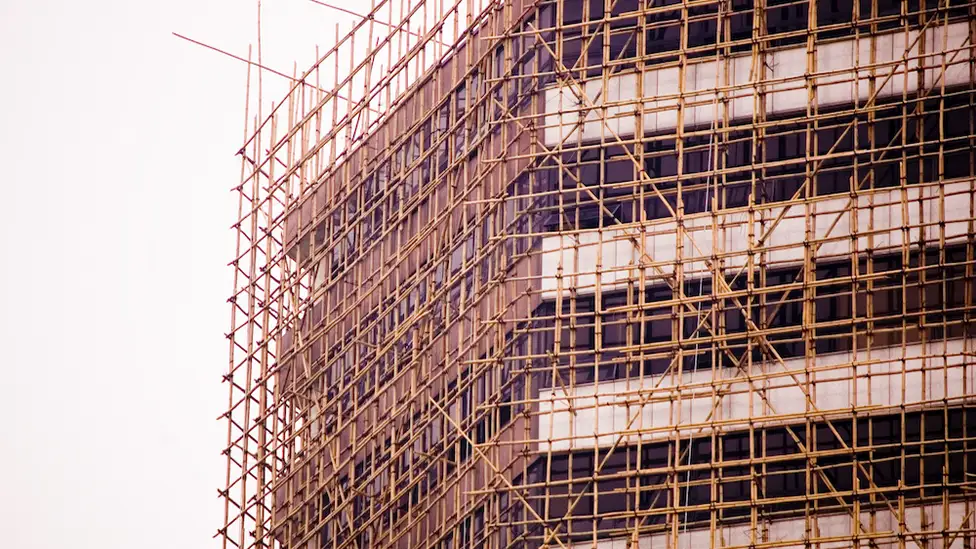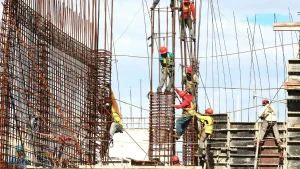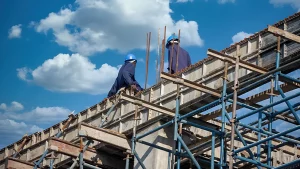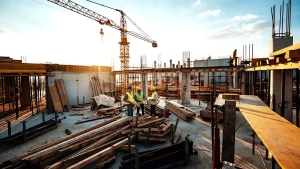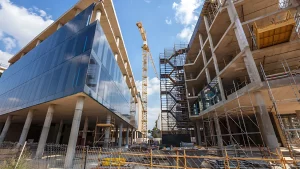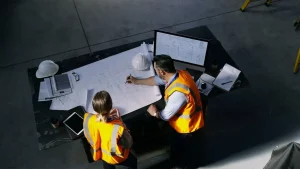Ghana’s construction landscape is undergoing a profound transformation, with sustainable building materials playing a pivotal role. As the world faces the dire consequences of climate change and environmental degradation, the construction sector’s responsibility becomes paramount. Ghana, with its unique blend of rich history and rapid urban development, is leading the charge in integrating sustainability into its construction ethos.
The Environmental Imperative: A Global Context
The construction industry, globally, has been a significant contributor to environmental challenges. From the vast deforestation in the Amazon to the carbon-intensive cement factories in China, the repercussions are felt worldwide. Ghana, despite its smaller scale in global construction, feels the ripple effects of these global practices. Rising temperatures, shifting rainfall patterns, and increasing coastal erosion are stark reminders of the changing climate.
In this global context, the shift towards sustainable building materials is not a mere trend but an urgent necessity. These materials, by virtue of their reduced environmental impact, are Ghana’s answer to a global call for sustainable construction practices.
Delving into Ghana’s Sustainable Building Materials
Bamboo: More Than Just a Plant
Bamboo, in the context of Ghana, is more than just a plant; it’s a symbol of sustainable growth. This “green gold” grows rapidly, sequestering carbon at rates much higher than most trees. Its strength rivals that of steel, making it an ideal construction material. But beyond its physical properties, bamboo represents a shift in construction thinking. By adopting bamboo as a primary building material, Ghana is not only reducing its carbon footprint but also promoting local economies. Villages and towns, previously reliant on subsistence farming, are now becoming hubs of bamboo cultivation and construction.
Earth Bags: Embracing the Earth
Earthbag construction is a testament to human ingenuity. By using the very earth on which structures stand, this method reduces the need for carbon-intensive materials like cement. The bags, filled with local soil, are stacked to form walls, which are then plastered over. The result? Buildings that are cool in the heat and warm in the cold, all while having a minimal environmental impact.
Plastic: From Pollutant to Building Block
Ghana, like many countries, grapples with plastic pollution. But in adversity lies opportunity. Companies, both local and international, are transforming plastic waste into construction materials. These aren’t just any materials; they’re durable, water-resistant, and, most importantly, sustainable. By turning a pollutant into a resource, Ghana is showcasing the power of innovative thinking.
The Broader Implications of Sustainable Building Materials
Economic Revitalization
Sustainable building materials are not just good for the planet; they’re good for the wallet too. By reducing reliance on imported materials, Ghana is keeping money within its borders. Local industries, from bamboo farming to recycled plastic production, are flourishing. This economic revitalization has a ripple effect, leading to job creation, increased local investment, and community development.
Health and Community Well-being
Buildings made from sustainable materials are healthier. They breathe better, ensuring good air quality. Their natural insulation properties mean fewer artificial temperature controls, leading to reduced respiratory issues. Beyond the individual, these buildings foster community well-being. They’re often built using local labour, ensuring that money stays within the community. Their construction becomes a communal activity, fostering bonds and relationships.
Setting a Global Standard
By embracing sustainable building materials, Ghana is not just bettering itself; it’s setting a standard for the world. Countries, both in Africa and beyond, are looking to Ghana as a beacon of sustainable construction. Its practices, innovations, and successes serve as a model for nations worldwide.
The Path Forward
The journey towards complete sustainability is long and fraught with challenges. There are economic pressures, resistance to change, and the ever-looming threat of climate change. But Ghana, with its commitment to sustainable building materials, is on the right path. Every bamboo stalk used, every earthbag laid, and every piece of recycled plastic moulded, is a step towards a greener, more sustainable future.
Conclusion
Sustainable building materials are at the heart of Ghana’s construction revolution. They represent a melding of tradition and innovation, of local needs and global challenges. As Ghana continues on this path, it stands as a testament to what’s possible when sustainability is at the forefront.
